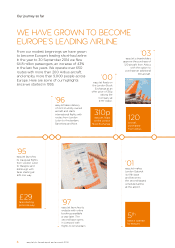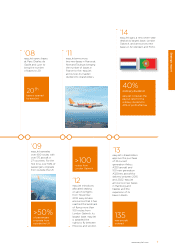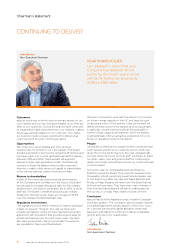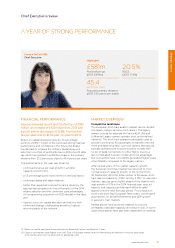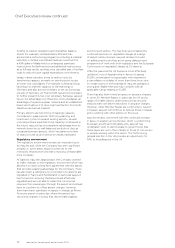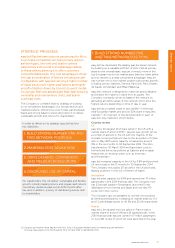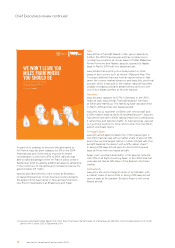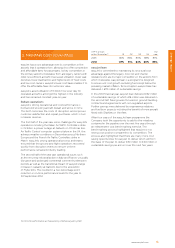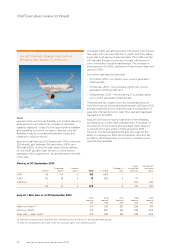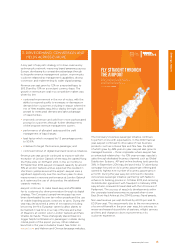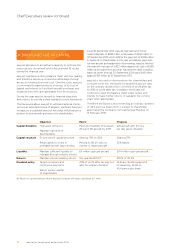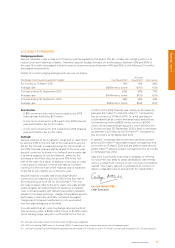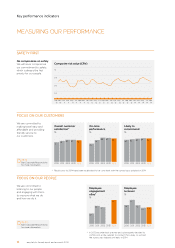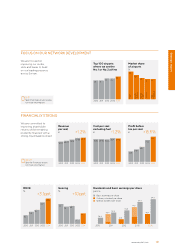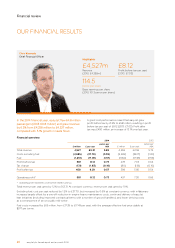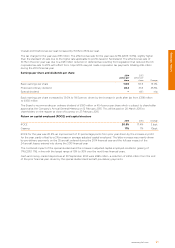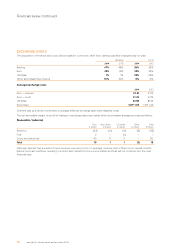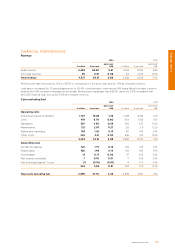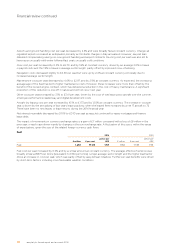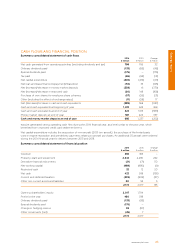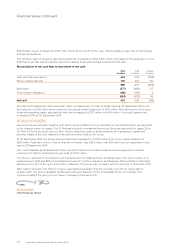EasyJet 2014 Annual Report Download - page 18
Download and view the complete annual report
Please find page 18 of the 2014 EasyJet annual report below. You can navigate through the pages in the report by either clicking on the pages listed below, or by using the keyword search tool below to find specific information within the annual report.
16 easyJet plc Annual report and accounts 2014
Chief Executive’s review continued
easyJet allocates its aircraft and capacity to optimise the
returns across its network and it discontinued 36 routes
during the financial year.
easyJet maintains a strong balance sheet with low gearing
and therefore derives a competitive advantage through
access to funding at a lower cost. Over the cycle, easyJet
is committed to earning returns in excess of its cost of
capital, and intends to fund both aircraft purchases and
dividends from the cash generated from the business.
During the year easyJet revised its financial objectives
and metrics to provide a clear capital structure framework.
This framework allows easyJet to withstand external shocks
such as an extended closure of airspace, significant fuel price
increases or a sustained period of low yields whilst being in a
position to drive growth and returns for shareholders.
As at 30 September 2014, easyJet had cash and money
market deposits of £985 million, a decrease of £252 million on
30 September 2013 which reflects the payment of £308 million
in dividends to shareholders in the year, pre-delivery payments
for new aircraft and repayment of borrowings. easyJet finished
the year with net cash of £422 million against net cash of £558
million at the same time last year. Adjusted net debt, including
leases at seven times at 30 September 2014 was £446 million
against £156 million at 30 September 2013.
easyJet is focused on driving returns for shareholders and,
consistent with this, the Board increased the pay-out ratio
on the ordinary dividend from one third of profit after tax
to 40% of profit after tax. In addition the Board will
continue to keep the balance sheet under review and
intends to make further returns of capital in the coming
years when appropriate.
Therefore the Board is recommending an ordinary dividend
of 45.4 pence a share which is subject to shareholder
approval at the Company’s Annual General Meeting on
12 February 2015.
Objective Metric Progress
Capital discipline High asset efficiency
Maintain high level of
fleet flexibility
Fleet size flexibility of between
204 and 316 aircraft by 2019
226 aircraft with 11 hours
per day asset utilisation
Capital structure Ensure robust capital structure
Retain ability to invest in
profitable growth opportunities
Gearing: 15% to 30%
Moving to 80:20 ratio on
owned vs. leased aircraft
Gearing 17%
32% leased
Liquidity Maintain sufficient liquidity to
manage through industry shocks
£4 million cash per aircraft £4.4 million cash per aircraft
Returns Maintain industry-leading returns Top quartile ROCE(8) ROCE of 20.5%
Dividend policy Target consistent and
continuous payments
Return excess capital
to shareholders
40% of profit after tax pay-out
ratio for ordinary dividend
Ordinary dividend payment
increased by 35.5% to
45.4 pence per share
(8) Return on capital employed shown adjusted for leases with leases capitalised at 7 times.
4. DISCIPLINED USE OF CAPITAL


